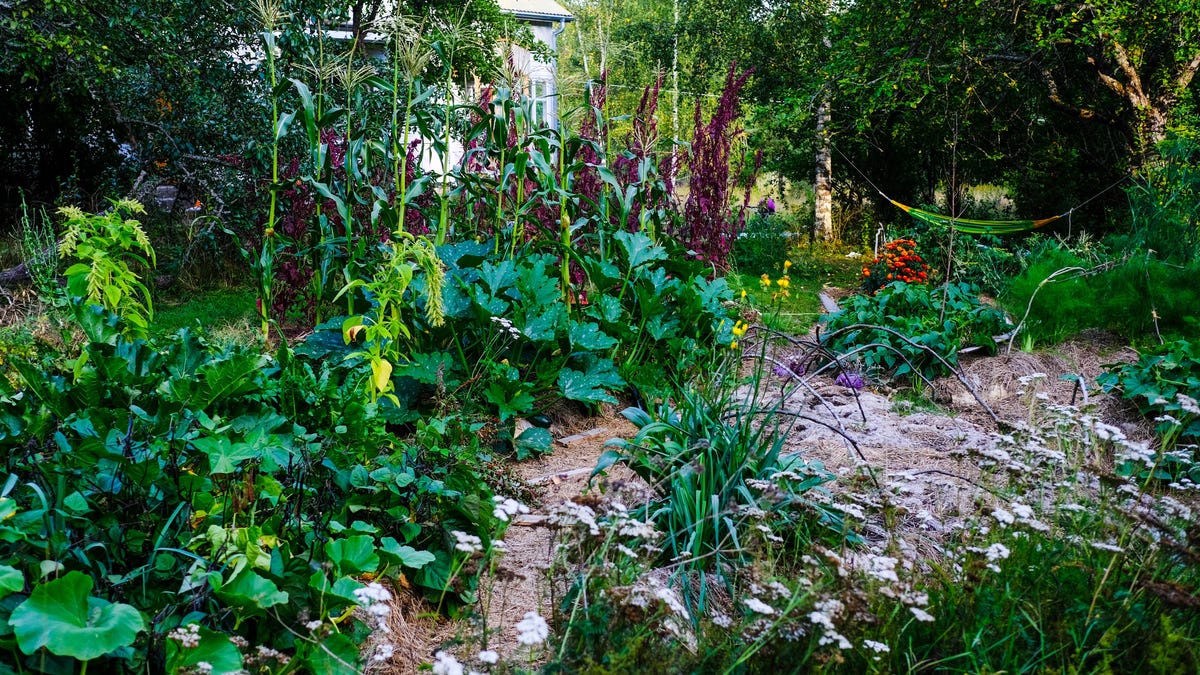How to Grow a Permaculture Food Forest in Your Backyard (and Why You Should)

Modern gardening often involves weeding, turning soil, fertilizing, and pest control. But permaculture is the practice of growing a garden with the least possible interference, based on companion planting, native insects, and the addition of cover crops to control weeds. In a permaculture food forest, fruit trees are combined with other plants to produce as much food as possible in a small space. Not only is it safe for children and pets, but it also offers increased yields and low maintenance, making it a great choice if you grow your own food. Here’s how to get started if you want to try your hand at growing your own food forest.
Food forests are nothing new
The idea of a food forest is new to many of us, but it is actually an ancient way of growing food dating back at least 2,000 years. While European colonists often did not recognize the permaculture food forests planted by indigenous peoples in Asia, Africa, and the Americas, nomadic and semi-nomadic people have cultivated crops for food and medicine for millennia. Unlike the strict rows and bare soil between plants, food forest features are layered and to the uninitiated observer they look like natural features in the forest, so it wasn’t until the 1970s that the idea became popularized as a form of gardening for the urban and suburban gardener.
Plant your forest from high to low
Creating a permaculture food forest requires enough space for at least a few trees and shrubs so that you can plant your forest from high to low. For maximum sun exposure, plant the tallest trees first—south to north in the northern hemisphere and north to south in the southern hemisphere. You can start with walnut trees; then fruit trees such as pear, cherry and apple; then shrubs such as blueberries, raspberries, hazelnuts and rosemary; then herbs such as oregano, thyme, and sage; and finally, use cover crops that will help attract pollinators and add nutrients, such as clover, vetch, bush bean, or other nitrogen-fixing plants.
Add some pest control plants
Adding some natural pest repellents can help your growing food forest thrive. Marigolds, lavender, onion, garlic, and petunia help prevent aphids. Daffodils, geraniums, and hyacinths will help keep squirrels and raiding rabbits away. While there is no way to keep intruders from foraging in your forest, creating a healthy variety will make your plants more resilient even if some animal or insect friends stop by for a bite to eat.
Diversify your plants
The trick is that your plants should form a diverse ecosystem, not create a monoculture environment that requires a lot of fertilizer, weeding and pest control. Because many plants are perennials, they won’t need to be repotted every year to grow food. And using a variety of plants helps make the soil healthier than regular garden soil. The presence of cover crops also allows the soil to retain more moisture even in hot weather. All of these factors mean less water, pesticides and work, while still producing more food than a more modern garden.
Food forests are great too
Less pesticides and the rotation of flowering plants means more pollinators than your average vegetable garden, so you can enjoy more species of bees, butterflies and hummingbirds. Increasing local biodiversity is not only beneficial for food production, but also for creating beautiful garden views.